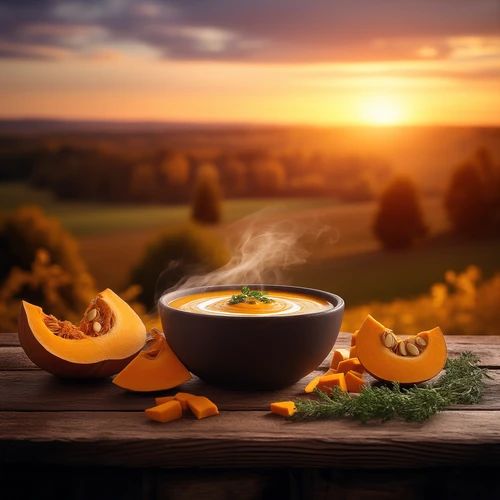Welcome to the world of pumpkin cuisine. Pumpkin is not only a staple of fall menus but also a versatile ingredient that can transform simple meals into comforting, colorful dishes. From hearty soups to sweet desserts, pumpkin brings natural sweetness, earthy flavor, and a burst of orange hue to any plate.
Why cook with pumpkin? Pumpkin is packed with vitamins A and C, potassium, dietary fiber, and low calories. Its high beta‑carotene content supports eye health, while its antioxidants help fight inflammation. By incorporating pumpkin into your cooking routine, you add nutrition without sacrificing taste.
Tips for selecting pumpkin. Look for firm pumpkins with smooth skin and a rich, deep orange color. Avoid those with soft spots, bruises, or a greenish tint. For cooking, the smaller varieties such as sugar pumpkins or mini pumpkins are ideal; they grow quickly, have mild sweetness, and require less preparation time.
Preparing pumpkin for cooking. Wash the pumpkin thoroughly, cut it into quarters, and remove seeds and stringy pulp. Slice the flesh into uniform cubes—about 2 cm each—to ensure even cooking. Depending on the recipe, you might peel the skin; however, most modern varieties have tender skin that is safe to eat, so peeling is optional.
Cooking methods. Pumpkin can be roasted, boiled, sautéed, mashed, or pureed. Each technique brings out different flavors:
- Roasted: Toss cubes with olive oil, sea salt, and your favorite spices (cinnamon, cumin, or smoked paprika). Roast at 200°C (400°F) for 25–30 minutes until caramelized.
- Steamed or boiled: Ideal for soups or purees; cook until tender, then blend smooth.
- Sautéed: Use for stir‑fries or added texture in salads; quick pan‑sauté yields a slightly crisp exterior.
- Mashed: Blend with butter, maple syrup, or a splash of coconut milk for a creamy side dish.
- Pureed: Perfect for sauces, fillings, or enriching stews; add a dash of nutmeg or clove for warmth.
Sample recipe: Simple Pumpkin Soup
- Pumpkin puree: 400 g
- Vegetable stock: 600 g
- Onion, diced: 100 g
- Garlic cloves, minced: 15 g
- Olive oil: 15 g
- Cinnamon: 2 g
- Nutmeg: 1 g
- Salt: 2 g
- Black pepper: 1 g
- Heavy cream: 50 g (optional)
- Fresh parsley, chopped: 5 g
1. In a pot, heat the olive oil and sauté onion and garlic until translucent.
2. Add pumpkin puree, cinnamon, nutmeg, salt, and pepper; stir for 2 minutes.
3. Pour in vegetable stock and bring to a gentle simmer for 15 minutes. Use an immersion blender to smooth the mixture until silky.
4. Stir in heavy cream if desired and adjust seasoning. Serve hot, garnished with parsley.
Beyond soup: baking and desserts. Pumpkin flour or cake mix opens a world of sweet treats. Bake a pumpkin loaf, loaf, or muffins by substituting half the flour with pumpkin puree, and include spices like cloves, ginger, and allspice. For a lighter option, mix pumpkin puree with oat milk and honey, then freeze for frozen yogurt.
Creative pairings. Pumpkin pairs wonderfully with savory grains such as quinoa or rice, nutty toppings like chopped pecans, and dairy alternatives like coconut milk. For a hearty vegetarian entrée, try pumpkin risotto, adding a splash of white wine and Parmesan (or vegan cheese) near the end.
Storage and safety. Cooked pumpkin can be kept in airtight containers in the refrigerator for up to 4 days. Freeze leftovers in freezer-safe bags; thaw and reheat gently. Be mindful that raw pumpkin should be refrigerated if not used within 2 days of purchase.
With these techniques and recipes, pumpkin becomes a kitchen staple that fuels creativity and sustenance. Whether you’re a seasoned cook or a culinary beginner, adding pumpkin to your repertoire promises warmth, flavor, and a touch of autumn in every bite.


